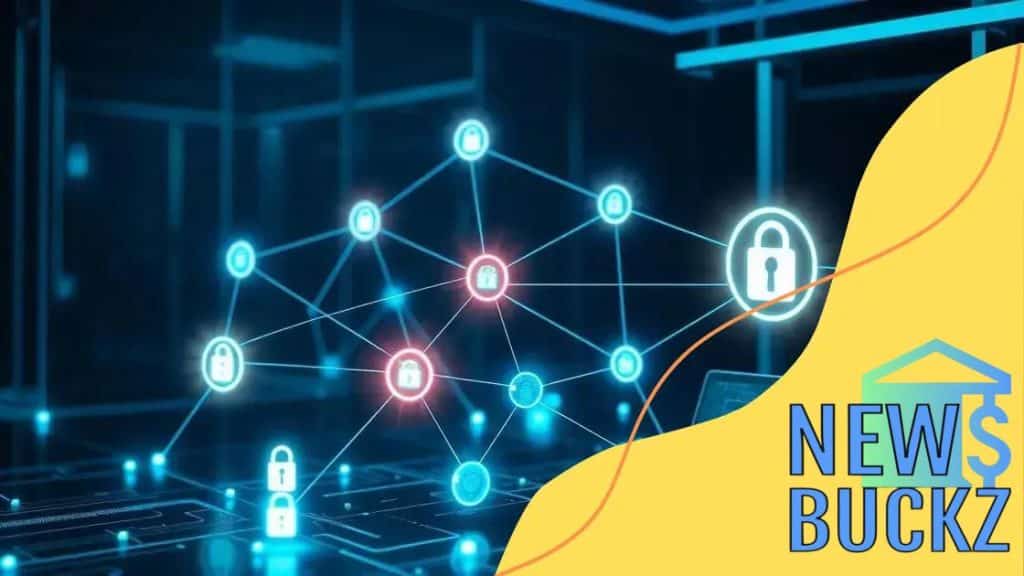Blockchain’s role in securing digital identities

Anúncios
Blockchain’s role in securing digital identities involves enhancing security through decentralization, transparency, and immutability, addressing challenges like regulatory compliance while paving the way for future trends such as biometric authentication and AI.
Blockchain’s role in securing digital identities has become crucial in our digital age. With the rise of cyber threats, many are questioning how we can better protect our personal information online.
Anúncios
Understanding digital identities
Understanding digital identities is essential in our connected world. As we interact online, we leave behind traces that define who we are in the digital space. This goes beyond just usernames and passwords.
A digital identity encompasses information such as personal data, online behavior, and our digital footprint. It plays a crucial role in how we access services like banking, social media, and e-commerce.
Components of digital identities
Several elements contribute to our digital identities. These include:
Anúncios
- Personal information: Name, address, and age are foundational.
- Online accounts: Social media profiles and email addresses.
- Digital behavior: Search history and online purchases.
We must be aware of how these components interact and can be used or misused. A secure digital identity means protecting these elements from unauthorized access.
Why digital identity matters
Having a clear understanding of our digital identities helps us maintain control over our personal information. As we engage with various platforms, it’s important to know:
- How our data is used
- The potential for identity theft
- Methods to safeguard our privacy
In this rapidly evolving digital landscape, knowledge about digital identities is more critical than ever. Awareness can empower us to make informed choices and protect ourselves online.
How blockchain enhances security
Blockchain enhances security in various ways that make it ideal for protecting information. The core feature of blockchain is its decentralized nature, which reduces the risk of single points of failure.
Each transaction on a blockchain is encrypted and time-stamped, providing a secure and transparent record. This is especially crucial for sensitive data, as it ensures that unauthorized access is extremely challenging.
Key features of blockchain security
Several features make blockchain a strong security solution:
- Decentralization: No central authority controls the data, making it harder for malicious actors to manipulate it.
- Transparency: All transactions are visible to participants, allowing for quick detection of suspicious activity.
- Immutability: Once a transaction is recorded, it cannot be altered or deleted, which protects data integrity.
Due to these characteristics, blockchain technology is increasingly used in various sectors, including finance and healthcare, to secure personal information. These industries benefit from a reduced risk of data breaches.
Blockchain applications for enhanced security
Many organizations are adopting blockchain to secure their operations. This includes:
- Supply chain management: Ensuring traceability and authenticity of products.
- Digital identity verification: Enhancing the security of personal identities online.
- Financial transactions: Providing secure methods for transferring funds without intermediaries.
As we continue to embrace digital solutions, understanding how blockchain enhances security equips us to protect our data better in an ever-changing technology landscape.
Real-world applications of blockchain

Real-world applications of blockchain showcase how this technology impacts our daily lives. Companies and governments around the world are discovering innovative ways to utilize blockchain beyond cryptocurrencies.
One major area is supply chain management. By leveraging blockchain, businesses can track products from their origin to the consumer. This transparency helps reduce fraud and ensures authenticity, which is critical for industries like food and pharmaceuticals.
Key sectors using blockchain
Several sectors are adopting blockchain technology. Here are some noteworthy examples:
- Finance: Banks are using blockchain to streamline transactions and reduce costs.
- Healthcare: Patient data can be stored securely, improving privacy and data management.
- Real estate: Property transactions benefit from reduced paperwork and greater security through smart contracts.
The demand for secure digital identity solutions is also driving blockchain adoption. Individuals can maintain control over their personal information while interacting with various services online. This not only enhances security but also simplifies the user experience.
Innovation fueled by blockchain
Every day, new projects emerge that tap into the potential of blockchain technology. From decentralized finance (DeFi) platforms to non-fungible tokens (NFTs), innovation thrives in this space. As we move forward, the versatility of blockchain continues to inspire new ideas and applications.
In education, for instance, blockchain can verify credentials and certificates, helping employers validate qualifications without extensive background checks. This can significantly reduce hiring fraud and streamline recruitment processes.
Challenges in implementing blockchain
Challenges in implementing blockchain are significant and can slow down its widespread adoption. Despite its benefits, many organizations face hurdles when integrating this technology into their operations.
One major challenge is the issue of scalability. As more transactions occur on the blockchain, the network can become congested, leading to slower processing times. This can be particularly problematic for businesses that require rapid transaction speeds.
Key challenges to consider
Several factors complicate the implementation of blockchain:
- Regulatory uncertainty: Many jurisdictions lack clear guidelines on blockchain use, which can make compliance difficult.
- Cost of implementation: Developing and maintaining blockchain technology can be expensive due to the need for skilled personnel and infrastructure.
- Interoperability issues: Different blockchains may not communicate effectively with each other, hindering collaboration between systems.
Another challenge is the education gap. Many organizations do not fully understand how blockchain works or its implications. This knowledge gap can hinder informed decision-making about its adoption.
Public perception and trust
Public perception of blockchain also plays a role in its challenges. Due to its association with cryptocurrencies, many people may have skepticism about its legitimacy. Building trust in blockchain technology is essential for its long-term success.
Moreover, the energy consumption of certain blockchain systems, especially those using proof-of-work mechanisms, raises environmental concerns. Addressing these challenges is critical as we look to leverage the full potential of blockchain in various industries.
Future trends in digital identity security
Future trends in digital identity security are critical as technology evolves and cyber threats become more sophisticated. Organizations must adapt to new challenges and opportunities that arise in the digital landscape.
One major trend is the increasing emphasis on biometric authentication. Technologies like facial recognition, fingerprints, and iris scans provide a higher level of security compared to traditional passwords. These methods are not only harder to hack but also offer convenience for users.
Trends shaping digital identity security
Several key trends are emerging in the field:
- Decentralized identities: Individuals can manage their own digital identities through blockchain, allowing for greater control over personal data.
- Artificial intelligence: AI is increasingly used to analyze behavior and detect fraudulent activities, enhancing security protocols.
- Zero trust models: Organizations are adopting zero trust approaches, verifying every transaction and user, regardless of their location.
Moreover, privacy regulations are becoming stricter worldwide. Compliance with laws such as GDPR and CCPA requires organizations to implement robust security measures to protect consumer data. Failure to do so can lead to severe penalties and damage to reputation.
The role of user education
User awareness is another crucial aspect of future trends. As more individuals engage online, educating them about safe practices is vital. This includes understanding phishing attacks, recognizing suspicious behavior, and adopting secure habits.
Implementing training programs that focus on cybersecurity can greatly reduce risks. As we look ahead, these trends highlight the importance of staying proactive in protecting digital identities in an increasingly connected world.
FAQ – Frequently Asked Questions About Digital Identity Security
What is a digital identity?
A digital identity refers to the information used to represent an individual online, including personal data, social media accounts, and online behavior.
How does blockchain enhance digital identity security?
Blockchain enhances security by providing a decentralized and transparent system, making it difficult for unauthorized parties to alter or access personal data.
What are the main challenges in implementing digital identity solutions?
Key challenges include regulatory uncertainties, the need for user education, and high implementation costs, which can hinder widespread adoption.
What trends should we watch in digital identity security?
Future trends include increased use of biometric authentication, decentralized identities, and artificial intelligence to improve security and user control.





